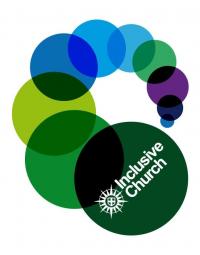



The Church is dedicated to the Holy Innocents. These were the Jewish boys under the age of two who were massacred by King Herod. This was after the visit from the wise men in search of the king of the Jews. These children are probably the first martyrs to suffer for our Lord. All Christian churches are built to oppose this injustice. Holy Innocents Great Barton is one of only five churches in the country dedicated to the Holy Innocents. It is most unusual for a mediaeval church.
Wool was a very important industry in East Anglia. Woolpit and Lavenham are local churches built from the proceeds of the trade. Gt. Barton was on the edge of the wool producing area. 'Dog Pews' were put in the Church in honour of the dogs who helped the shepherds during the years when wool was a very important product of the county. The shepherd's dogs were very important to them, and far too valuable to leave outside while the shepherds were in church. The Dog Pews were situated in the back of the church, and the shepherds were encouraged to bring their dogs in with them. The shepherds were also allowed to sleep (with their dogs) in the porch. These pews can now be found at the front of the church and are one of the many items around Holy Innocents that tell a fascinating story of the church's history.
Great Barton is believed to have been a settlement of the Iceni tribe before the Roman occupation of England. It is believed that Barton mere was occupied by early lake-dwellers. Records mention the parish in the time of Edward the Confessor, however it was not until about 950 AD that the parish was given into the care of the abbey of Bury St Edmunds. The abbey held it until the monastery was dissolved in 1539. It is almost certain that a Saxon Church existed here- it is probable that this was a simple wooden building rebuilt in stone by the Normans. In 1086, the Domesday Book states that the church possessed 50 acres of land, valued at £20. The chancel was erected and the font was installed in the late 13th century. These are the earliest parts of the present church. Over the centuries, various additions were made to the church when funds became available. It was the job of the Rector to maintain the chancel, whereas other parts were maintained by the parishioners. In the 15th century they erected the aisles, clerestory and tower. Much money was left to the church for restoration in the 15th century, including from the Rector of that time, William Howerdly. The following two centuries saw the destruction of many parts of the church due to the Reformation and Puritan purge. At this time the majority of the angels in the roof were destroyed. Their remains can still be seen today. Little work was done on the church until the Victorian era when major restoration work began.
The list of incumbents goes back to 1320 when the parish was in the diocese of Norwich. In 1823 it was in the Diocese of Ely, and in 1914 it became a member of the newly formed Diocese of St. Edmundsbury and Ipswich.